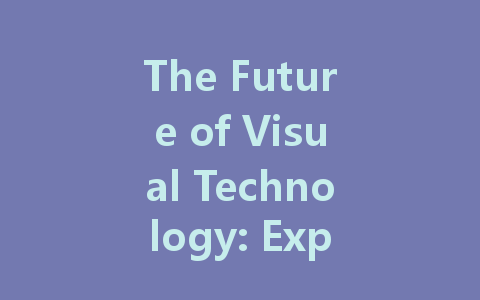
The world of display technology is undergoing unprecedented transformations, with LED (Light Emitting Diode) displays leading the charge. From small screens on smartphones to colossal video walls in stadiums, LED technology has revolutionized how we consume visual content. In this article, we will delve into the various innovations in LED displays, their applications, and what the future holds for this fascinating technology.
What Are LED Displays?
LED displays are screens that use light-emitting diodes to produce images and videos. Unlike traditional LCD screens that rely on backlighting, LED technology allows for greater contrast and vibrant colors by utilizing individual light sources. This results in sharper images and a better viewing experience. With their increasing popularity, LED displays have found numerous applications across various sectors, including advertising, entertainment, education, and more.
Types of LED Displays
LED technology has evolved, giving rise to several types of displays tailored for different needs. Here are some noteworthy categories:
Outdoor LED displays are designed to withstand various weather conditions while shining brightly in sunlight. These displays are often used for billboards, traffic signals, and event promotions. Their high brightness and visibility make them perfect for capturing audience attention.
Typically used in retail environments, conference rooms, and stage performances, indoor LED displays are optimized for lower light conditions. They offer excellent clarity and can portray intricate details, making them ideal for presentations and advertisements.
Transparent LED displays are a cutting-edge innovation that allows viewers to see through the screen while also displaying dynamic content. This technology is being used in retail storefronts, museums, and exhibitions, seamlessly blending marketing with architecture.
Modular LED displays feature individual panels that can be assembled in various configurations. This flexibility allows for custom sizes and shapes, making them suitable for unique installations like fitness centers and creative event backdrops.
Applications of LED Displays
The versatility of LED technology has made it a critical component across diverse industries. Here are some of the most popular applications:
One of the most prominent uses of LED displays is in advertising. Brands utilize attention-grabbing visuals on LED billboards and signs to engage customers. These displays can be updated instantly to reflect promotions or new products, enhancing marketing strategies significantly.
In the entertainment sector, LED displays are used in concerts, theaters, and sporting events. They provide stunning visuals that enhance the audience’s experience, often serving as backdrops for performances or displaying information about ongoing events.
Educational institutions are increasingly adopting LED displays for classrooms and auditoriums. These screens can display rich multimedia content, making learning more engaging for students. Furthermore, they enable instant updates for important announcements.
LED displays play a vital role in the transportation sector, particularly in airports, train stations, and bus terminals. They provide real-time information about arrivals, departures, and delays, improving passenger experience and operational efficiency.
The Future of LED Technology
As we look towards the future, several trends and innovations are shaping the evolution of LED displays:
As technology advances, LED displays are becoming increasingly high-resolution with finer pixel density. This means sharper images, enhanced details, and a better viewing experience, especially in close-proximity installations.
LED displays already consume significantly less power than traditional display technologies. Future advancements are likely to enhance energy efficiency even further, making them more sustainable and cost-effective for businesses.
Integrating smart technology into LED displays is gaining traction. Features like touch interactivity, facial recognition, and connectivity with other devices can provide personalized experiences. This shift towards smart displays will pave the way for innovative marketing strategies and interactive communication.
The concept of 3D and holographic LED displays is making waves in the tech world. These displays promise a new dimension to visual content, offering engaging ways to showcase products in retail and advertising.
As technology becomes more compact, the idea of wearable LED displays is gaining attention. Imagine clothing or accessories that can light up with vibrant graphics! This trend could revolutionize fashion and marketing, offering limitless possibilities for self-expression.
Conclusion
LED display technology is continually evolving, impacting various sectors and enhancing our visual experiences. From innovative applications in advertising and education to futuristic advancements like smart integration and 3D displays, the future of visual technology is bright. With the rise of LED displays, we can look forward to a world where information is conveyed in more engaging, efficient, and visually stunning ways. As industries harness the power of this technology, we can anticipate transformative experiences that will shape how we interact with the world around us.